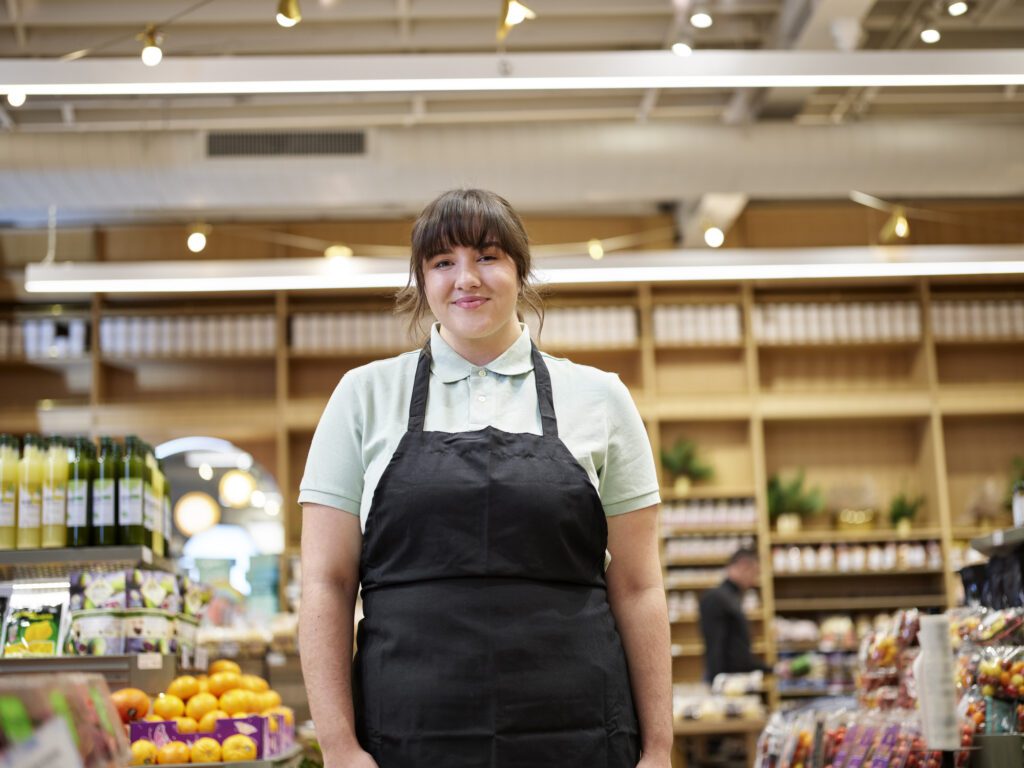The ROI of workplace safety in grocery
Associates have a lot on their minds right now. An exceptionally volatile economy means many customers are struggling to pay their grocery bills—leading to frustration and even sometimes violent altercations in stores involving workers.
Combine these economic pressures with the already-alarming rates of everyday workplace accidents and the rise of organized retail crime (ORC) targeting meat, seafood, candy, alcohol and energy drinks in grocery stores, and there’s a severe risk to associate safety (and your bottom line).
We recently polled workers on the grocery frontline to learn how customer experiences have changed and revealed what grocers can do to improve their associates’ day-to-day work so their businesses can thrive.
Polling the frontline: What’s happening in grocery
The results of our poll revealed that from anecdotal firsthand experiences on the grocery frontline, customer incivility is indeed growing. This means there’s a lot that grocers need to do to better support their employees through these challenging experiences to keep them safe and reduce the cost of shrink caused by theft and ORC.

Grocery staff feel scared to go to work—and being underprepared to handle volatile situations is a big reason:
- 60% said they’ve seen an increase in irritable behavior
- 21% said they don’t feel prepared to handle customer situations involving theft
- 40% reported feeling scared to go to work with hostile and volatile interactions on the rise
Workplace safety and loss prevention training is good for your bottom line
According to Business and Industry Connection Magazine, slips, trips and falls cost businesses over $11B annually. Retail shrink led to an additional $94.5B in losses in 2021, with one Canadian industry expert estimating that the average-sized food retail store sees up to $5,000 worth of groceries stolen each week.
Consistent and intentional investment in associate enablement and training helped one U.S. grocery chain see a $40,000 reduction in employee claim expenses year-over-year.

Prepare associates with the right tools and empathetic training
With 58% of associates reporting more disputes between customers and staff, it’s a trend that’s impossible to ignore. Grocers still have the opportunity, and responsibility, to help calm fears, maximize productivity and achieve operational consistency by offering proper training to prepare their teams and minimize risk.
Safety protocols and loss prevention strategies should already be on every grocery executive’s mind, but it’s also essential to consider the specific needs of staff in the process.
This year, grocery leaders assigned 57K+ associates the “Dealing with Difficult Customers” learning module available in the Axonify Content Marketplace. That’s over 500,000 questions answered on the topic dedicated to improving the occupational health and safety of grocery employees.
Grocery workers need timely, continuous training to reduce other daily risks, too. This type of training can include:
- Chemical safety and hazard symbols – Harmful accidents, injuries and damage caused by chemical exposure are significant workplace hazards. Ensure associates are well-versed in the Global Harmonized System of Classification and Labelling of Chemicals or when to consult Safety Data Sheets (SDS). You can supplement or regularly refresh OSHA training requirements using chemical safety training.
- Slip, trip and fall prevention – Grocery associates using Axonify have already answered 1.2M questions on slip, trip and fall prevention this year and we’ve already outlined how much of a financial toll these accidents can have if left unchecked.
- Acknowledging and engaging customers: One way to reduce the risk of unpleasant customer-employee interactions is by building associate confidence to ensure customers feel recognized and cared for in the way they prefer throughout their shopping experience.
- Personal protective equipment basics: Teach associates to protect themselves from workplace hazards with proper PPE, how to effectively inspect it and ensure it’s in appropriate and safe working condition.
You can’t control a customer’s mood or motives—especially with today’s volatile economy. But an investment in grocery associate training and support is worth the time and effort: they’ll be better enabled to make the right decisions and manage customer expectations and concerns without compromising their safety or your business goals.
